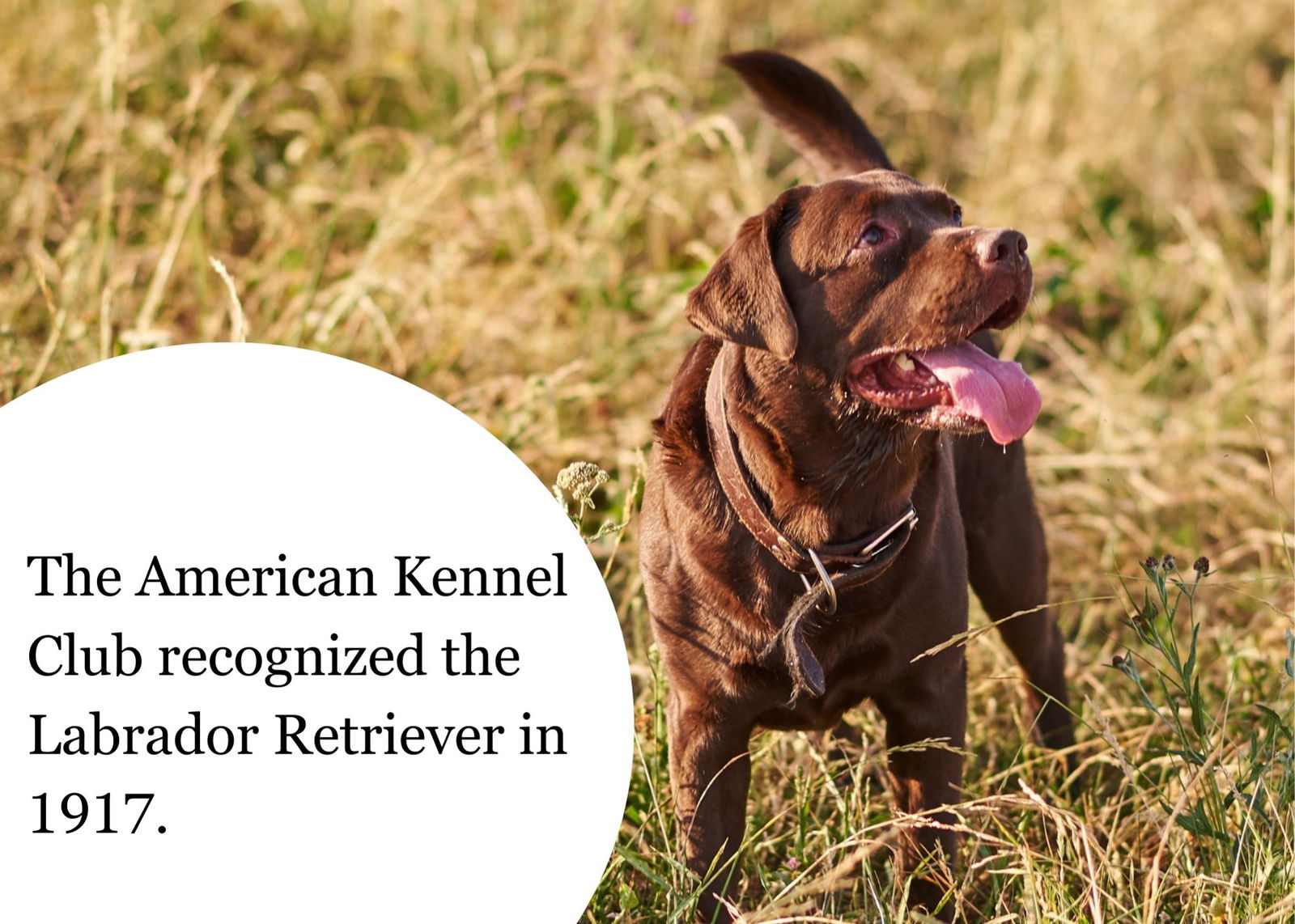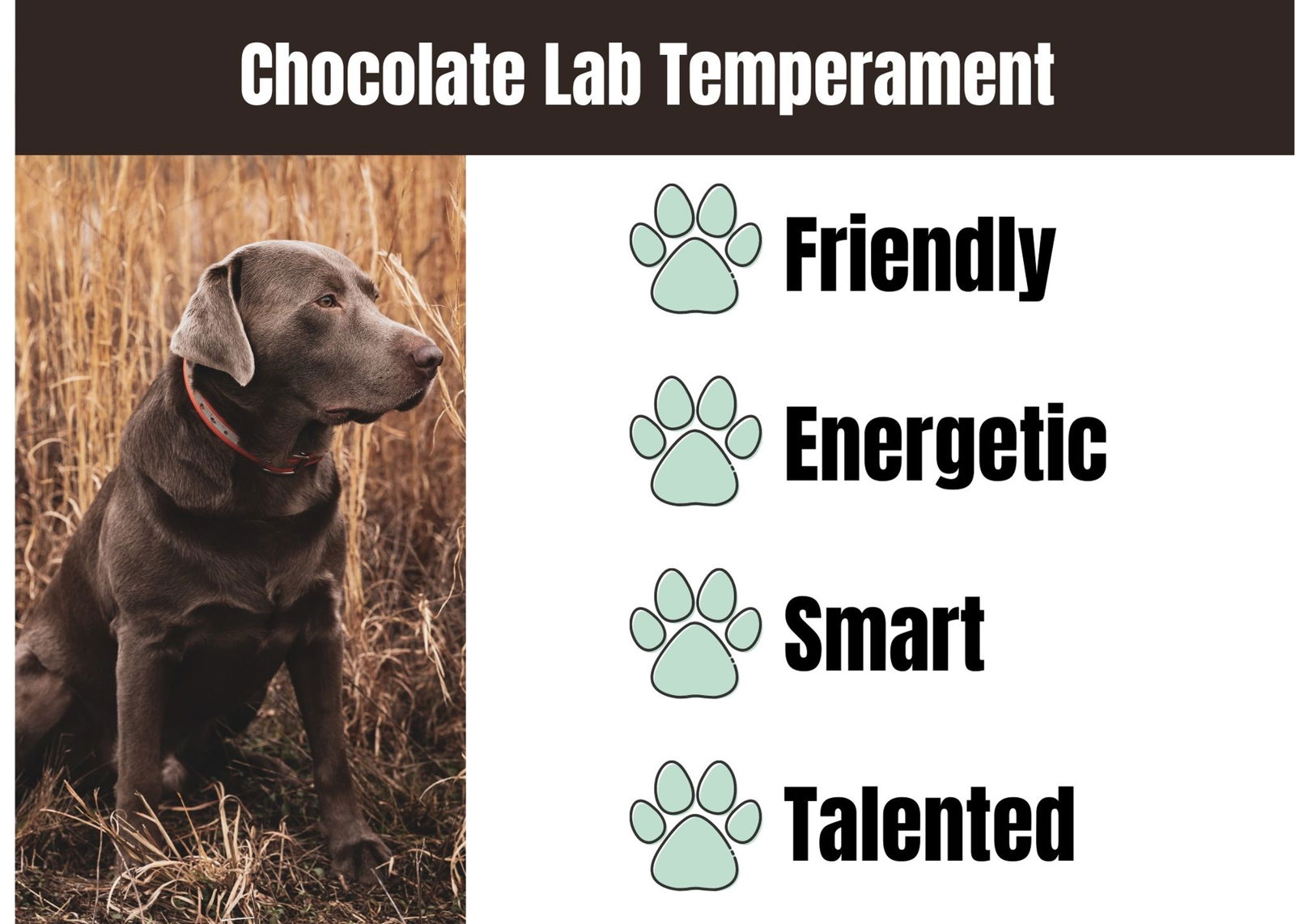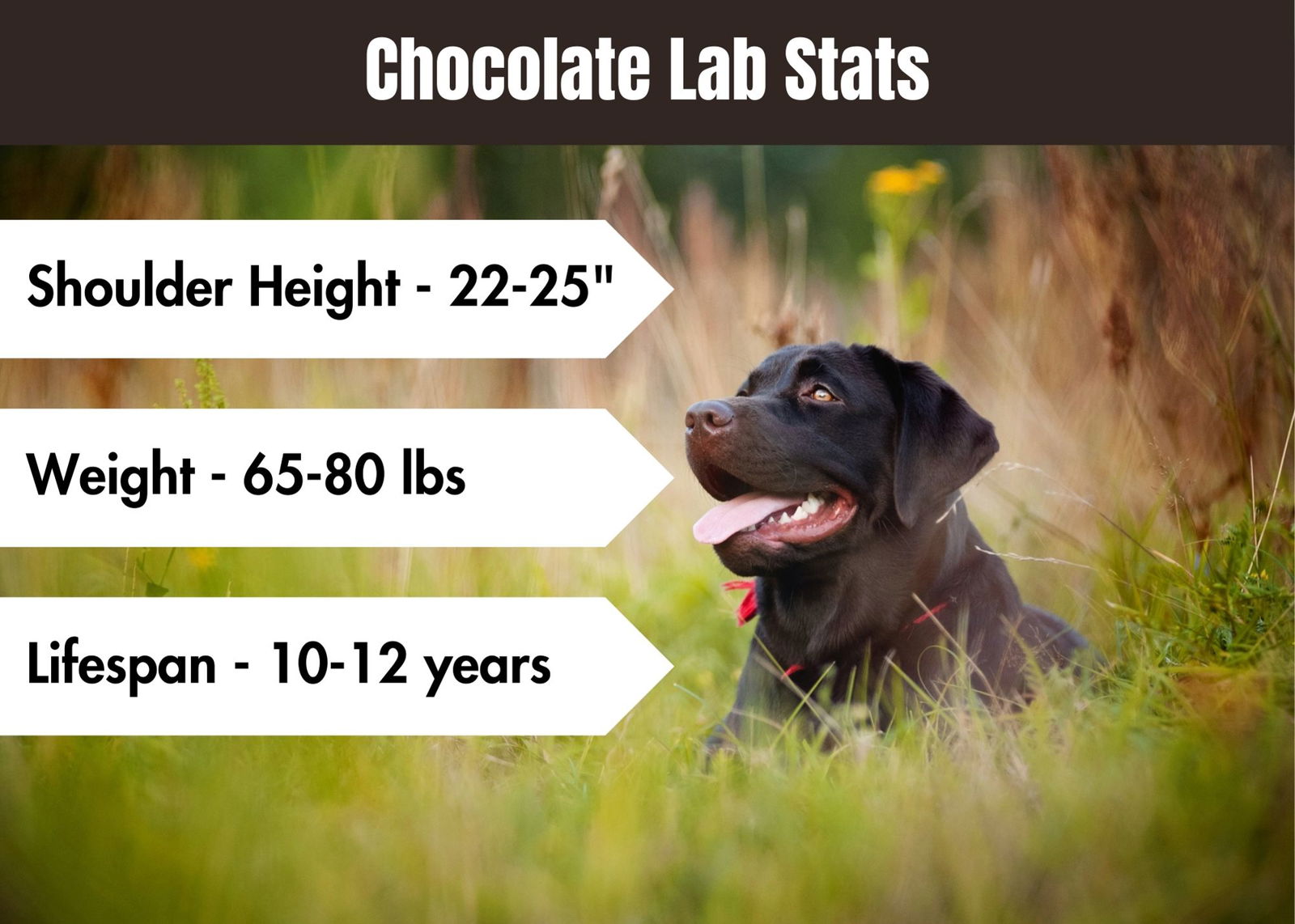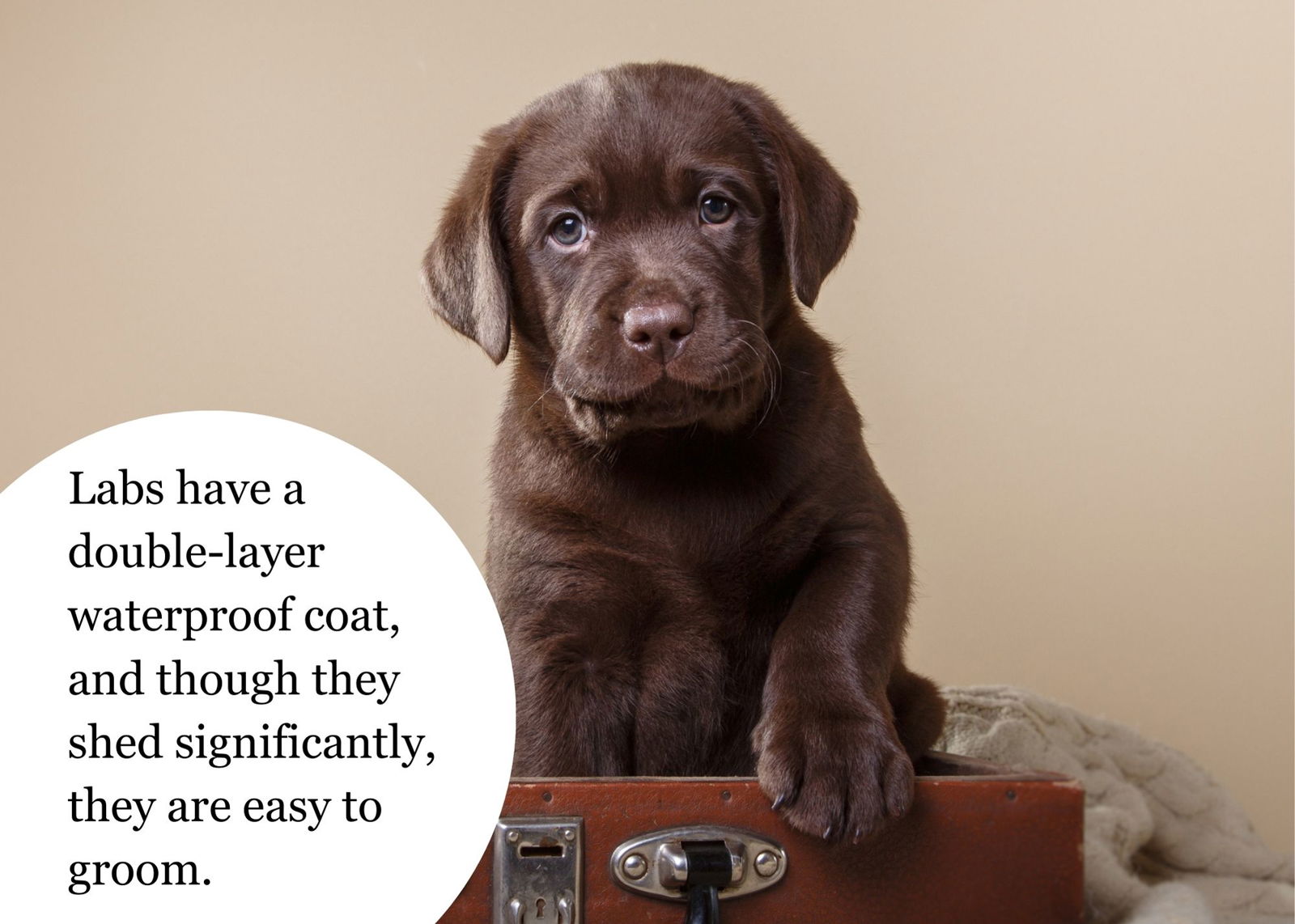Are you looking for a classic, active dog breed that loves people, adventures, and fun?
The Labrador Retriever breed has been one of the best-selling breeds in America for over two decades, and they are popular for a reason!
Chocolate Labrador Retrievers are well-loved for their versatility - a family dog, hunting companion, or adventure partner; Labs love to participate in whatever you’re doing. They excel in sports, swimming, obedience, therapy work, search and rescue, and more!
But Chocolate Labrador Retrievers aren’t for everyone. Their exuberant energy means they need lots of space and exercise, and their thick double coat causes a lot of shedding.
Is a Chocolate Lab the right dog breed for you?
Today, Infinity Pups will help you think through all the details so you can decide with confidence whether or not you should purchase a Chocolate Lab!
Let’s get started!
Table of Contents
What Makes a Chocolate Lab Chocolate?
Labrador Retrievers can be black, yellow, chocolate (brown), silver, fox red, and white, although black, yellow, and chocolate are the only colors accepted by the AKC.
Chocolate Labrador Retrievers have a gorgeous brown or rich chocolate color coat. The chocolate color can range from dark brown to light brown and used to be called “liver” instead of “chocolate”!
But did you know because the chocolate color is a recessive trait, there are fewer Chocolate Labs than Yellow and Black Labs? Black and yellow are the dominant colors and are more common.
So that makes Chocolate Labs pretty special!
In recent years, people have been interested in unique and rare colors, leading to the popularity of the white, silver, and fox red Labrador colors. But don’t worry! Trends will come and go, but the black, chocolate, and yellow labs will always have their loyal lovers.
If you are interested in other colors of Labs, take a look at our Yellow, Black, Silver, Fox Red, or White Labrador Retriever puppies. And if you’re not sure a Lab is the right puppy for your home, view our complete list of puppies for sale.
History of the Chocolate Labrador Retriever
The Labrador Retriever breed originates in Newfoundland, off the Canadian coast. Originally called “St. John’s Dog,” they were used by hunters and fishermen to retrieve wild game, fishing nets, lines, hats, and more in the water. They were excellent swimmers, and their double coats kept them warm in cold water.
The St. John’s Dog was thought to be crossbred in the 1700s with the Newfoundland Dog and other smaller water dogs.
British sailors who visited northern North America noticed the speed and ability of these dogs, and they began bringing them back to England. The Earl of Malmesbury was one of the most notable Briton to bring back one of these dogs. He used his new dogs to help hunt in the swamps and water of his estate.
The breed continued to grow in popularity, and in 1903, the English Kennel Club officially recognized the Labrador Retriever. The American Kennel Club recognized the Labrador Retriever in 1917.
While Labrador Retrievers as a whole were well-loved, Chocolate Labrador Retrievers were not initially popular.
At the end of the 1800s, brown-coated labs began to be bred but remained a very small minority. They were called “liver” and were not considered desirable.
When a “liver” colored Lab won a championship award in the United Kingdom in the 1960s, brown became more popular. The name was changed from “liver” to “chocolate,” which made the breed more appealing.

Temperament of Chocolate Labrador Retrievers
Before adopting any dog, it's important to understand their temperament, energy levels, grooming needs, and health concerns. Read on to learn more about the temperament of this iconic and well-loved dog breed.
Friendly: Chocolate Labs are usually happy to meet new people. When meeting a Labrador Retriever for the first time, expect to be greeted with happy tail wags and licks. They may even bring you their favorite toy! However, Labs need training and socialization, as puppies to ensure that their energy is channeled in the right direction.
Energetic: Labs may be easy-going, but they are full of energy and love to be involved in whatever is happening around them. Whether you are a hunter, hiker, swimmer, or enjoy camping or four-wheeling, Labs love to be outdoors and explore! If you adopt a Chocolate Lab, plan to give your dog plenty of exercise. A Lab is not happy left home alone all day.
Smart: Labrador Retrievers are an intelligent breed and can be trained to do a variety of tasks. In fact, Labs are considered one of the top ten smartest dog breeds in the world! They learn quickly and are eager to please their owner. But be warned – with high intelligence comes a lot of responsibility for the owner: Labs need mental stimulation to be happy. Without exercise or a game to play, Labs will find entertainment for themselves, which usually involves chewing, tearing, or digging. If you are considering adopting a Lab, plan to enroll your Lab in puppy kindergarten, socialization classes, and obedience classes.
Talented: One reason Labs are so popular is their ability to adapt to different environments and fill many roles. While many Labs are loved as playful and loyal companions, Labs also make excellent therapy dogs, hunting dogs, guide dogs, police dogs (as drug detectors), and more. Labradors Retrievers are also excellent swimmers and have a great sense of smell.
Consider your space, time commitment, and activities you can offer your dog, and choose the best breed for you!

Which color of Lab is the best?
Today, every Lab-lover has a favorite color, and there are many opinions about what makes each color the best.
Have you heard the saying, “All dogs want to be Labs, and all Labs want to be black?” Whether or not black is the best color, it is the most common. About half of all Labs are black.
It is said that Black Labs have the best hunting instincts, while Yellow Labs are the friendliest, and Chocolate Labs are the most rambunctious. It is thought that Chocolate Labs have more health problems than Black or Yellow Labs. There is much debate about these claims and prejudices.
Scientifically, there is nothing to back up these claims. However, many Lab breeders and dog trainers have noted differences associated with coat colors.
What matters most is the temperament and health of your dog’s bloodline. Talk to the breeder about the type of Labs they raise to see if their dogs' energy level and temperament fit your lifestyle.
Chocolate Labrador Retrievers Size and Lifespan
When you adopt a chocolate lab, you are getting quite a lot of dog to love!
Labs are considered medium-to-large-sized dogs and generally grow to be 22-25″ tall at the shoulder and weigh around 65-80 pounds as adults.
You can expect your Chocolate Labrador Retriever to live for 10-12 years.

Physical Appearance
Chocolate Labrador Retrievers have a beautiful outer dark brown or chocolate coat, and they typically have a brown or light nose.
Because black is the dominant gene in a Labrador Retriever’s color, Chocolate Labs are not as common as Yellow and Black Labs.
Labrador Retrievers have a sturdy build and a boxy face with triangular ears that hang down on the sides of their face. If you’ve ever seen the movies Old Yeller, Marley and Me, or The Incredible Journey, you’ve seen a Labrador Retriever.
Grooming Information
Bred to work in and near the water, Labrador Retrievers have a double-layer waterproof coat that protects them from both cold and moisture. The topcoat is a shorter coat that is straight, and the undercoat is a softer and water-resistant coat. This means that Labs shed a lot!
Thankfully, their coats are easy to groom, and most Labrador Retrievers are receptive to grooming, especially if started at a young age and done consistently. Labs should be groomed several times a week or daily if kept inside.

Health Conditions that May Affect Chocolate Labs
Chocolate Labrador Retrievers are an overall healthy breed, and they don’t usually require any unusual care.
Due to their floppy ears and their love for water, you will want to check their ears regularly for infection. To prevent infection, make sure the ears completely dry out whenever your Chocolate Labrador Retriever becomes wet.
The Risk of Bloat in Chocolate Labrador Retrievers
Bloat, also called gastric dilatation-volvulus or gastric torsion, affects many dog breeds and is a life-threatening condition.
Bloat is when the stomach becomes twisted, and the gasses in the stomach are unable to escape. The pressure from these gasses affects the blood flow to the heart, and it can be fatal.
To prevent bloat:
- Avoid feeding your dog right before or after heavy exercise.
- Feed them a few smaller meals a day, instead of one large meal to prevent bloat. Learn to recognize the symptoms of bloat so you can take action immediately.
Some owners choose to have surgery done to tack their dog’s stomach in place and prevent it from twisting.
Hip and Elbow Dysplasia in Labs
Like all dog breeds, Labs are at risk for hip and elbow dysplasia, two of the most common health issues in dogs.
Hip and elbow dysplasia occurs when the thigh bone doesn’t fit snugly into the hip and can result in limping, lameness, or arthritis if it’s not addressed.
Hip and elbow dysplasia can be genetic, or it can be caused by environmental factors such as overeating or injuries.
Here are some ways to prevent hip dysplasia in your puppy:
- Ask the breeder for an OFA (Orthopedic Foundation for Animals) Hip Clearance. Dogs with hip dysplasia shouldn’t be bred.
- Talk to your vet about the right food for your puppy and stick to the correct amount to prevent unhealthy growth.
- Keep your puppy from running or jumping excessively on hard surfaces and from standing on its hind legs.
Protect Your Labrador Retriever from Obesity
You can protect your Chocolate Labrador from one of the most common health problems: obesity. One of the best ways to extend your dog’s life is by feeding them the correct amount of food and giving them adequate exercise.

Are Chocolate Labs Allergen-Friendly?
First of all, it’s important to know what causes allergens.
Allergens are caused by dander, which is dead skin cells. Animals and humans shed these dead skin cells.
Since Labrador Retrievers have a double coat, they are heavy shedders and are not considered an allergen-friendly breed. Regular grooming will help reduce your lab's dander and allergen levels.
Spending time with a puppy before adopting it can help determine if your allergies are triggered by the puppy you wish to adopt.
However, If allergens are a concern for you or a family member, please consult with your healthcare provider before adopting a Chocolate Labrador Retriever puppy.
If you want a Labrador Retriever with lower shedding, look at our Labradoodle puppies for sale!

Conclusion
Chocolate Labs are friendly, loyal, and energetic companions! They are one of the most popular dog breeds in America and fill many roles - from family companions to search and rescue dogs.
Their thick coat and sturdy build makes them hardy dogs that can handle cold weather, water, mud, snow, or just a walk in the rain!
Chocolate Labs are good-looking dogs with a lot of talent, energy, and love!
Whatever breed you adopt, ensure you are prepared for the adventure.
Owning a dog is a lot of work but rewarding! Trouble arises when owners don’t understand what owning a dog requires. Take time to do your research and find a reliable breeder and a trustworthy dog trainer.
Thankfully, reading this article already has you started down the right track. You can also read “Preparing Your Home for a Puppy” for more information!
And, when you are ready to buy a puppy, get in touch with one of our trusted breeders at Infinity Pups. We look forward to hearing from you!












